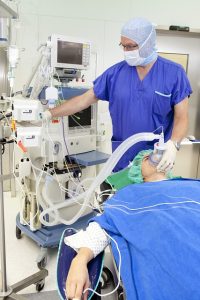As a foreign medical graduate, the most significant difference between your residency application process and that of an American student is the requirement for certification by the Educational Commission for Foreign Medical Graduates (ECFMG). This organization was founded in 1956 with the goal of ensuring that foreign medical students who enter ACGME-accredited programs in the United States are sufficiently prepared for the rigors of a U.S. residency. There are three requirements that foreign medical graduates need to meet in order to become certified by the ECFMG: application, education and examination.
Application
The first step of the ECFMG certification process is filling out an application. Any foreign medical student or graduate can apply, as long as you have earned (or are in the process of earning) a medical degree from a school that is listed in the World Directory of Medical Schools. To start the process, you will need to go the ECFMG website and request an identification number. From there, you can log in and start filling out the application.
Educational Requirements
The most important thing you need to do to show the ECFMG that you are ready for a U.S. medical residency is — of course — to earn your medical degree! You need to have completed at least four years of medical study at one of the medical schools that is listed in the World Directory of Medical Schools, and you need to provide documentation that you have completed all of the necessary credits for graduation. It is important to note that you can apply for ECFMG certification while you are still finishing your degree, but you will not be awarded a certificate until you have received your medical diploma and submitted your final transcripts.
Examination Requirements
After you have applied for ECFMG certification, you can apply to take the required exams. For ECFMG certification, you need to pass step 1 and step 2 of the United States Medical Licensing Examination (USMLE). The Step 1 test covers the fundamentals of medical science — that is, the information that is typically covered during the first two years of medical school in the United States. The Step 2 tests examine your clinical knowledge and clinical skills, which you can build during medical school and by completing student electives and graduate externships in the United States. Once you pass these exams, you will not only have met the requirements for ECFMG certification, but you will also be eligible to take Step 3 of the USMLE.
It is important to note that some states have additional requirements that foreign medical graduates are required to meet in order to enter a residency program in that state, which can be found at the website of the Federal State Medical Boards. These additional stipulations include specific medical school training requirements, a maximum number of attempts on the licensing examinations, and completing the licensing exams within certain time limits. If you have your eye on a particular residency program, or you know you want to work in a particular city, make sure to find out about these requirements.
The long process of preparing for and applying to residency programs in the United States can be complicated and challenging, but FMG Portal offers valuable resources to help you get matched. Contact us today for more information!








